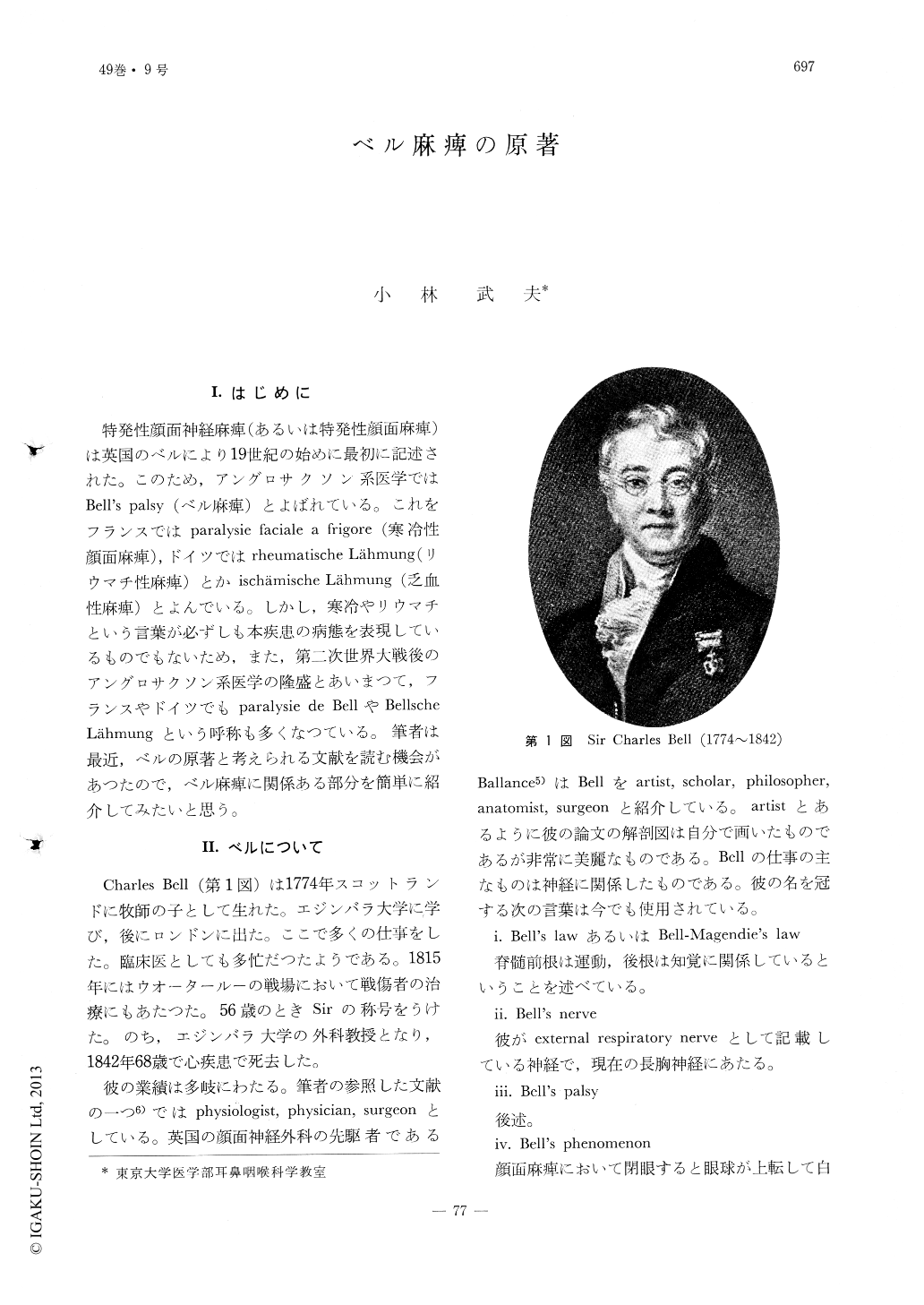Japanese
English
- 有料閲覧
- Abstract 文献概要
- 1ページ目 Look Inside
I.はじめに
特発性顔面神経麻痺(あるいは特発性顔面麻痺)は英国のベルにより19世紀の始めに最初に記述された。このため,アングロサクソン系医学ではBell's palsy(ベル麻痺)とよばれている。これをフランスではparalysie faciale a frigore(寒冷性顔面麻痺),ドイツではrheumatische Lähmung(リウマチ性麻痺)とかischämische Lähmung(乏血性麻痺)とよんでいる。しかし,寒冷やリウマチという言葉が必ずしも本疾患の病態を表現しているものでもないため,また,第二次世界大戦後のアングロサクソン系医学の隆盛とあいまつて,フランスやドイツでもparalysie de BellやBellscheLähmungという呼称も多くなつている。筆者は最近,ベルの原著と考えられる文献を読む機会があつたので,ベル麻痺に関係ある部分を簡単に紹介してみたいと思う。
The author comments on the original papers of idiopathic facial palsy by Sir Charles Bell. Bell is well known in physiological and pathological research in nervous system. Until his era (ca 1830), the true innervation of the facial muscles had not been known. He identified the facial nerve and probed that this nerve innervates the facial muscles through meticulous animal experiments.
Bell reported cases of facial palsy due to various causes, such as abcess of the mastoid, periauricular tumor, head injury etc.. Ever since then, the facial palsy had been called Bell's palsy.
Apart from the above cases that had definite etiology, he reported facial palsies that had no evident causes. He described a case in which an exposure to cold might have had a role. Susequently, the cold theory was established as an etiology of idiopathic facial palsy, which was called in French literature "paralysie faciale a frigore" and "rheumatische Lähmung" in German literature. It is strange that the term, Bell's palsy, nowadays has widely used as a synonym of idiopathic facial palsy.

Copyright © 1977, Igaku-Shoin Ltd. All rights reserved.


